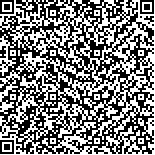|
| Abstract: |
| Deep Attractor Network (DANet) is the state-of-the-art technique in speech separation field, which uses Bidirectional Long Short-Term Memory (BLSTM), but the complexity of the DANet model is very high. In this paper, a simplified and powerful DANet model is proposed using Bidirectional Gated neural network (BGRU) instead of BLSTM. The Gaussian Mixture Model (GMM) other than the k-means was applied in DANet as a clustering algorithm to reduce the complexity and increase the learning speed and accuracy. The metrics used in this paper are Signal to Distortion Ratio (SDR), Signal to Interference Ratio (SIR), Signal to Artifact Ratio (SAR), and Perceptual Evaluation Speech Quality (PESQ) score. Two speaker mixture datasets from TIMIT corpus were prepared to evaluate the proposed model, and the system achieved 12.3 dB and 2.94 for SDR and PESQ scores respectively, which were better than the original DANet model. Other improvements were 20.7% and 17.9% in the number of parameters and time training respectively. The model was applied on mixed Arabic speech signals and the results were better than that in English. |
| Key words: attractor network speech separation gated recurrent units |
| DOI:10.11916/j.issn.1005-9113.2019044 |
| Clc Number:TN912.3 |
| Fund: |






